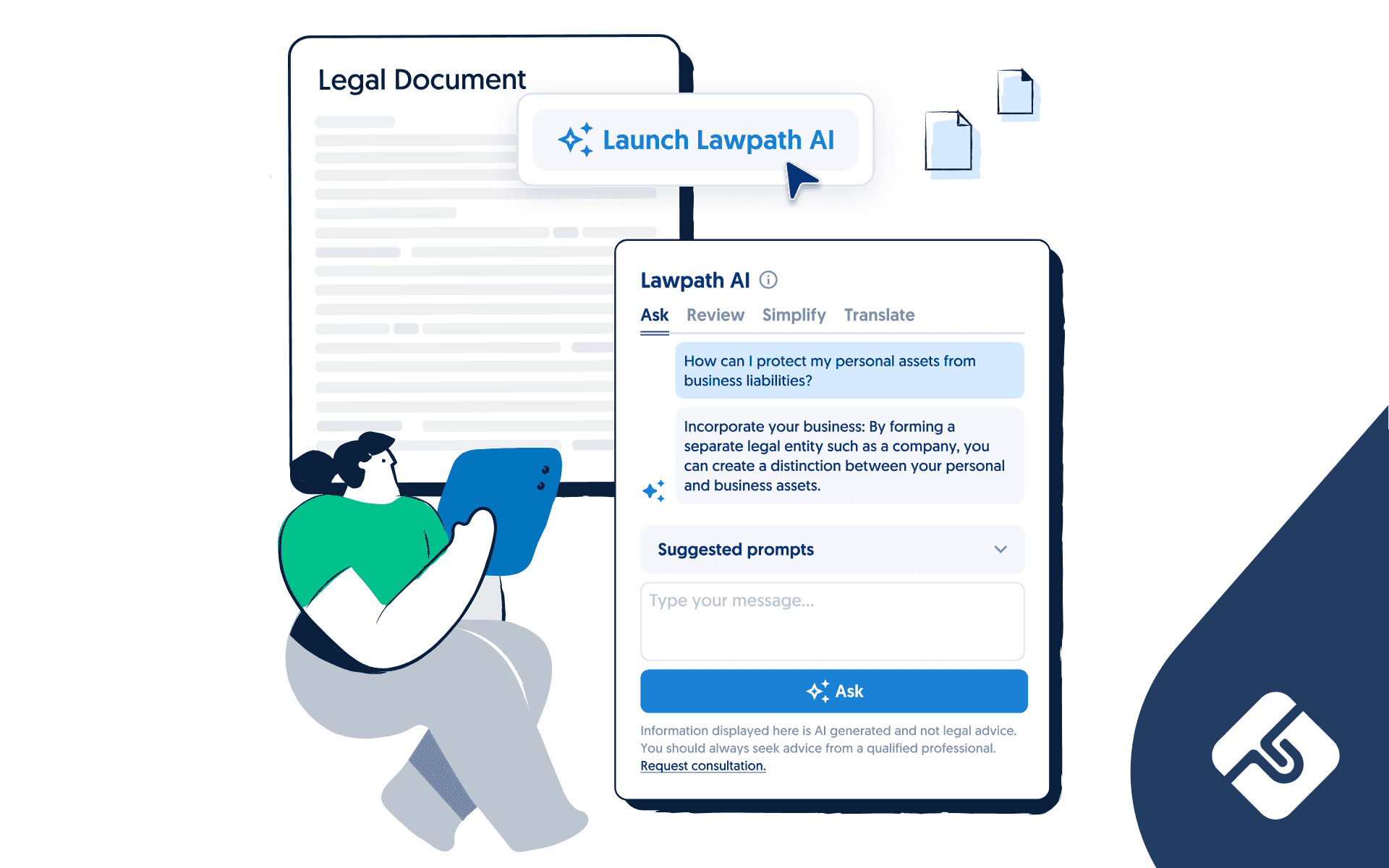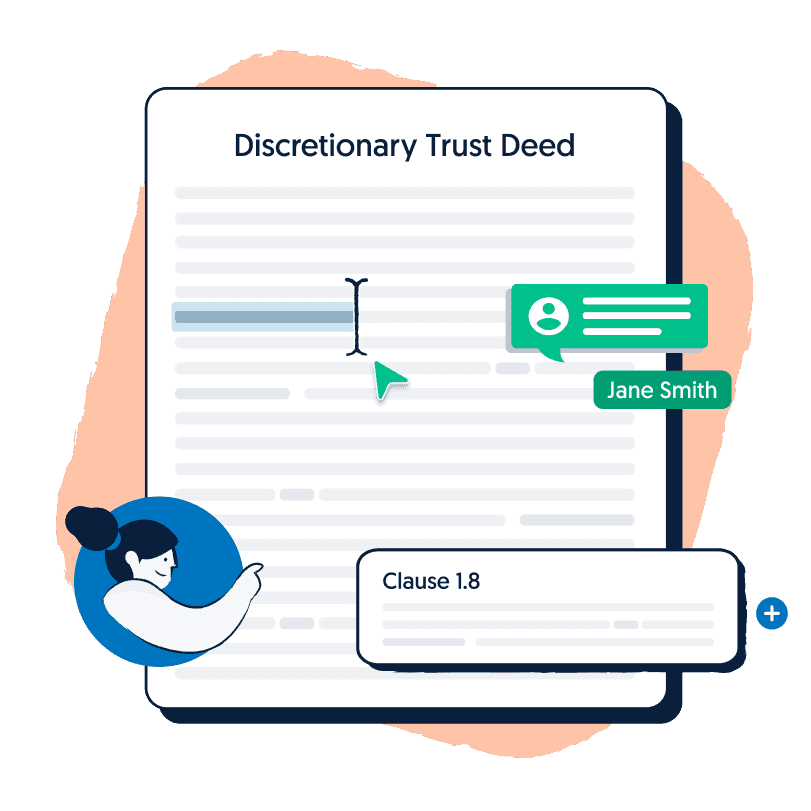Sydney-based lawyer, working in Document Automation with Lawpath. Edwin has an LLM in International Dispute Resolution (Humboldt-Universität zu Berlin), and experience in corporate law and environmental law. He is also passionate about driving transformation in legal service delivery and legal workplaces as President of The Legal Forecast NSW.
Navigating legal documentation can feel like traversing a minefield of complex jargon, intricate language, and potential risks. For entrepreneurs, small business owners, and individuals without a legal background, creating effective documents has always been a challenging, fraught and potentially expensive process.
Enter Contract AI – a transformative approach that’s reshaping how we understand and interact with legal documentation.
As a product manager and a former lawyer with experience in drafting and updating templates the “traditional” way, I have seen the competing priorities of efficiency and accuracy come to a head both in legal practices and in the everyday solutions people find to their legal problems.
The widespread deployment of AI into this environment has had a disruptive effect, but it is gradually revealing itself as a force that can be used to achieve better outcomes in terms of accuracy and efficiency at once. In this article I’ll take you through the ways that Lawpath’s Contract AI achieves this balance.
Table of Contents
What is Contract AI?
Contract AI is a concept that brings together document creation and review while catering to the messy steps in between.
Let’s step through what a typical lawyer will do when drafting a document. Rarely do lawyers draft a document completely from scratch. Rather, they find existing templates and build around that document- drafting compatible clauses, appendices and attachments.
When reviewing a document, rarely do lawyers carry out a full review with completely fresh eyes. Rather, they have specific benchmarks for quality, effectiveness and compatibility, and queries regarding the rights, obligations and procedures embedded in a document.
Now if you put that whole process in the hands of a legal layperson, you get the added complication that the person may not know how to pose their needs using the correct legal or commercial terminology, and may not be able to fully evaluate whether the finished product does what they want it to do.
The complexity of document creation
In some cases, producing a document can be as simple as copying and pasting, but in others it becomes an iterative process involving:
- Finding relevant precedents
- Simplifying complex language
- Translating technical terms
- Validating content
- Generating tailored sections
- Collaborating and integrating feedback
- Continuous review and refinement
As service providers we try to chart the most likely ways that untrained users, such as small business owners without legal teams, will navigate this process, and educate and prompt users to help them along. However, the more user journeys we observe the more we find this to be a sprawling, non-linear process which not all will be able to complete.
So we’ve taken a different approach, which is to provide users with a range of tools that can fit into whatever path they choose to complete a document. And we’ve found few tools as effective as our AI-powered tools.
Lawpath’s AI-Powered document tools
The following tools are the products of our extensive research into document drafting practices, and thorough quality control by our lawyers.
Translation Tool
Breaking language barriers, this tool assists users who may not be native English speakers. By selecting text within a document, users can quickly translate and understand content with greater clarity.
Simplify tool
Legal jargon can be overwhelming. The Simplify tool transforms complex legal terminology into plain English, provides context for legal concepts, and summarises extensive text sections.
You can see it in action here:
Ask tool
Accessible through the AI menu, the Ask tool is like a personal legal assistant. It helps users:
- Identify which needs can be addressed through document drafting
- Determine practical next steps
- Understand when professional legal advice is necessary
Here’s how it works:
Review tool
The Review tool scans the entirety of a document, and responds to queries regarding various aspects of the document, allowing users to navigate it, evaluate it, and compare it to other documents. It also suggests potential queries for users who may not be clear on the appropriate legal and commercial terminology.
Here’s how it works:
Insights tool
An advanced version of the Review tool, Insights auto-generates a risk assessment for different document sections. By grading each section’s potential risks, it encourages users to carefully examine their documents before finalising them.
Suggestions tool
Bridging document drafting and review, the Suggestions tool:
- Identifies incomplete or improvable document sections
- Provides targeted suggestions for improvement
- Allows users to provide context-specific prompts to refine suggestions
How AI is revolutionising document management
Imagine you’re a startup founder preparing a critical supplier agreement. Traditionally, this would involve:
- Hours of manual review
- Potential legal consultation
- Risk of misunderstanding complex clauses
With Lawpath’s AI tools, you can now:
- Upload their document instantly
- Receive clear clause explanations
- Get risk assessments
- Obtain suggested, context-specific modifications
- Understand complex language in plain terms
Benefits of AI-powered document tools
- Accessibility: No law degree required
- Time Efficiency: Reduce review time from days to minutes
- Risk Mitigation: Instant identification of potential issues
- Cost-Effectiveness: Minimise expensive legal consultations
- Flexibility: Adapt to unique user needs
FAQ
Is AI document review accurate?
Our AI uses advanced algorithms trained on extensive legal documents, providing reliable and consistent insights that complement human expertise. It alerts users when it reaches the limits of its ability to help, and recommends seeking legal advice.
Can AI replace lawyers?
No. AI enhances legal work by handling repetitive tasks, allowing legal professionals to focus on strategic advice and nuanced interpretations.
Are Lawpath’s AI tools free?
Pricing varies to suit different business needs and budgets.
Ready to simplify your legal documents?
AI is turning legal document management from an overwhelming chore into an empowering, streamlined experience. At Lawpath, our AI-powered tools aren’t just about tech – they’re about giving you clarity, confidence, and control over your legal needs.
Want to see how it works for your business? Chat to our friendly sales team on 1800 529 728 or email us at [email protected] – we’re here to help.







